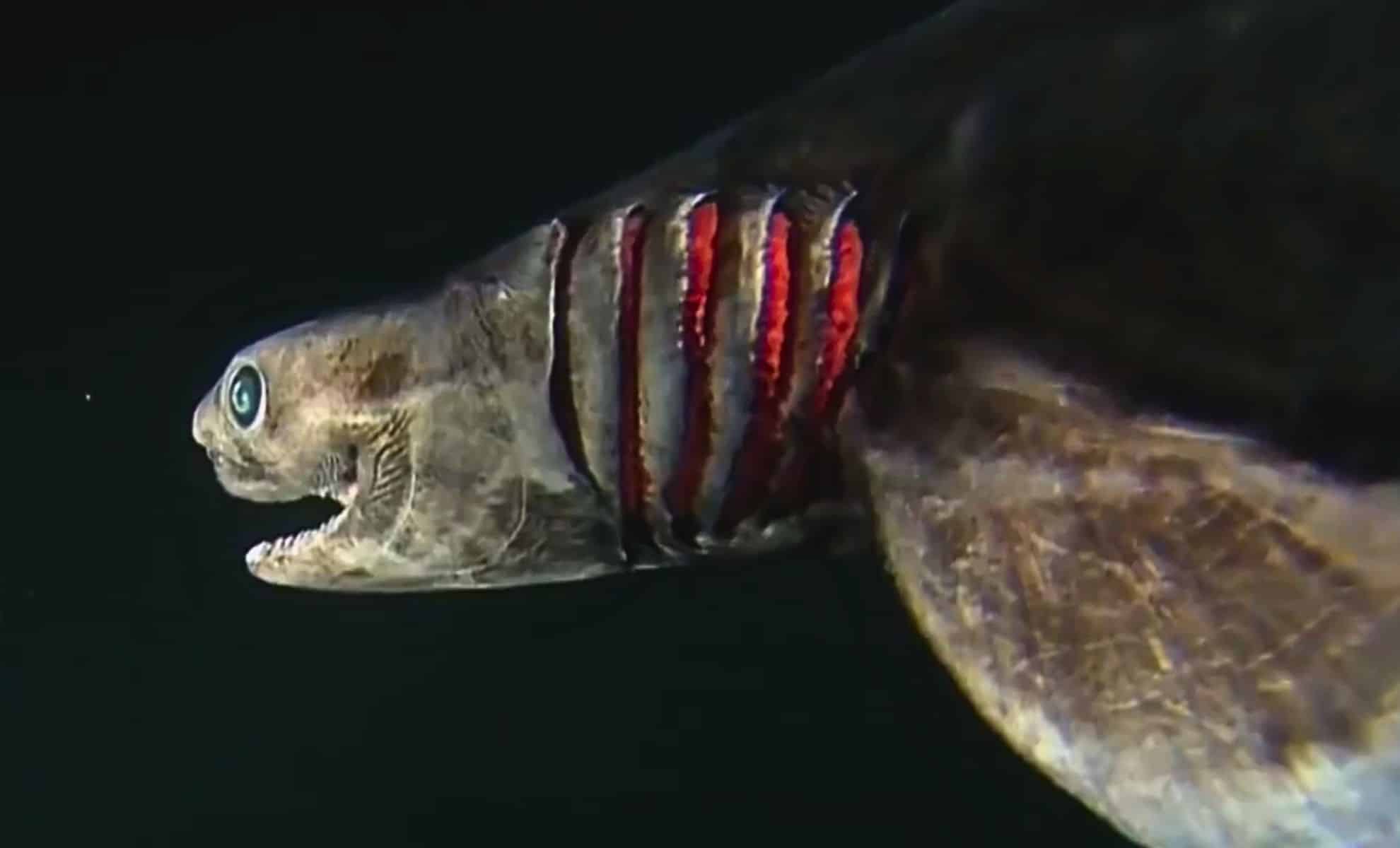
Researchers have made an extraordinary find off the coast of Portugal with the accidental capture of a frilled shark, a remarkable species that has undergone minimal changes over the past 80 million years. Featuring a serpentine shape, a highly flexible jaw, and 300 needle-like teeth, this elusive predator provides a fascinating insight into the ocean’s most enigmatic creatures.
An Ancient Creature from the Deep
This frilled shark was retrieved from depths of 700 meters during a research initiative funded by the European Union, focused on minimizing accidental bycatch in fishing. Measuring approximately 1.5 meters, this deep-sea predator is referred to as a “living fossil” due to the negligible evolutionary modifications it has experienced since the age of dinosaurs.
Its name derives from the unique gill structures that resemble frills around its neck. The shark’s slender, eel-like form aids its stealthy movements in the deep ocean, where it primarily preys on fish and squid, employing its sharp, backward-facing teeth to ensnare prey with little chance of escape.
A Rarely Seen Apex Predator
While the frilled shark has a worldwide distribution, sightings of it in its natural environment are exceedingly uncommon, typically residing at depths between 500 and 1,000 meters. Our understanding of this species’ population, behavior, and long-term conservation status remains limited.
A rare occasion of witnessing a live frilled shark occurred in Australia in 2007, but that individual did not survive long after its recovery. Scientists speculate that these sharks ascend due to factors like injury, illness, or environmental disruptions, making interactions with them exceedingly unusual.
Special Adaptations for Survival in the Deep
Distinct from contemporary sharks that rely on swift attacks, the frilled shark likely employs an ambush tactic, striking at unsuspecting prey in the dark depths of the ocean. Its highly flexible jaw enables the shark to consume sizeable prey whole, while its elongated body allows it to maneuver through tight hiding spots.
Another intriguing aspect is its reproductive cycle; scientists estimate that frilled sharks have one of the most prolonged gestation durations of any vertebrate, lasting up to 3.5 years. A female can give birth to between 2 to 15 young, but this slow reproductive rate places the species at risk from environmental changes.
Are Deep-Sea Fishing Practices Threatening This Species?
The frilled shark is not currently designated as endangered according to the International Union for Conservation of Nature (IUCN), yet the rise in deep-sea fishing operations has raised alarm over incidental captures. Given their slow reproduction and preference for unexplored oceanic regions, researchers caution that this species may be more vulnerable than previously believed.
This recent discovery highlights the urgent need for ongoing deep-sea research. Much of our oceans remain largely uncharted, and ancient creatures like the frilled shark serve as reminders that Earth still harbors mysteries from a distant past. However, with the increase in human activity in deep-sea environments, the future of these ancient hunters hangs in the balance.
This article originally appeared on National Geographic.









